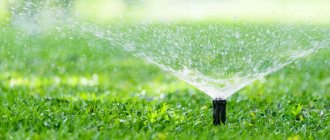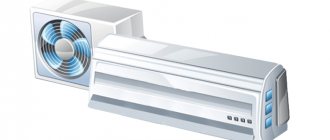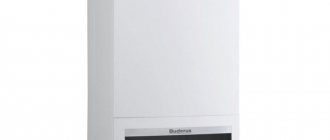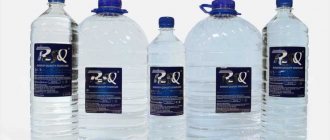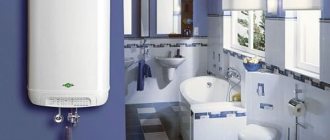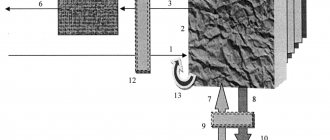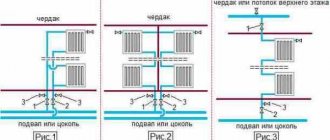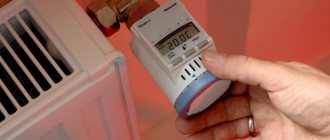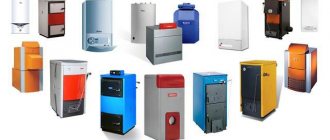Climate control equipment in a private house or apartment is no longer a curiosity, but an ordinary representative of household appliances. Over the past few years, this niche has undergone a rather strict segmentation, which resulted in the formation of separate subclasses with different functionality. Along with air conditioners, humidifiers have become increasingly popular. How to use such devices correctly? On the one hand, their device is simple and intuitive, but on the other hand, there are some specifics in servicing a household humidifier, which you should know about before purchasing it.
Types of humidifiers
The operating principle of different types of humidifiers is different, which also determines the features of their operation. Today, the most common types of devices are:
- Standard. This is a category of adiabatic models that use a special filter. Passing through it, the air is cooled and humidified.
- Device with air washing function. A modification of the above-mentioned device, in which the emphasis is on complicating the processes of humidification with blowing. The basis of the working structure is formed by a drum consisting of hydrophilic disks. The processes of washing air flows with the retention of unwanted particles take place in them.
- Steam humidifier. Such models work by heating water and then generating steam. From the point of view of the speed and quality of humidification, the solution is quite effective (therefore it is often used in production for technological purposes), but generating steam in a constant mode is very expensive in terms of energy consumption. In addition, such devices make a lot of noise, which is not very comfortable for domestic use.
How to choose the best air humidifier for an apartment from those presented above? You should focus on the tasks assigned to the device. The standard model of the device can handle the humidification function alone, but if you need additional cleaning properties, you will have to turn to an air washer. Steam versions are more often used in industry.
How does a humidifier work?
How air gets into the humidifier, why it turns into steam, where it should stand and how many years it will last - look up all this information on the Internet. You can also find a video that shows how the humidifier works to better understand the features of its operation and listen to the specific noise. This will help you decide on the type of device for your room.
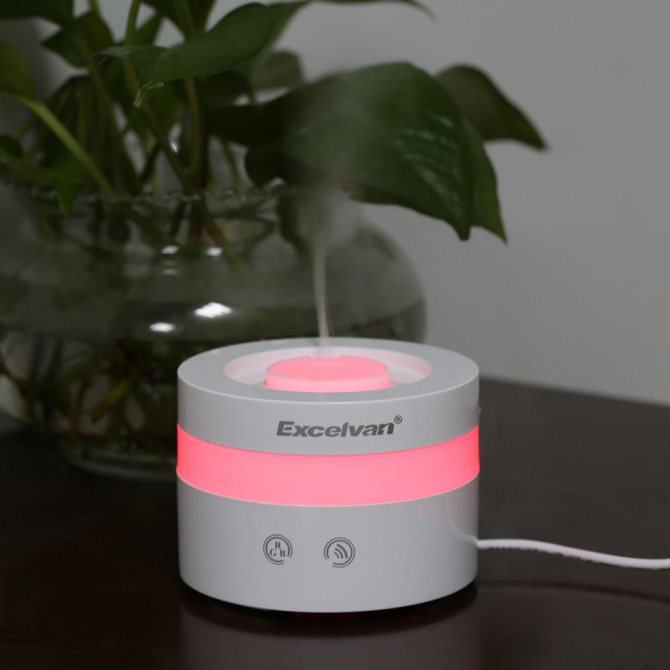
Separately, it should be noted that air humidifiers are:
Cold air humidifiers are devices that humidify the air with cold steam through the natural process of water evaporation.
Hot humidifiers work by heating water and evaporating the already hot steam. Hot humidifiers are healthier than cold ones, but both types are no more effective than an ultrasonic device.
Features of ultrasonic models
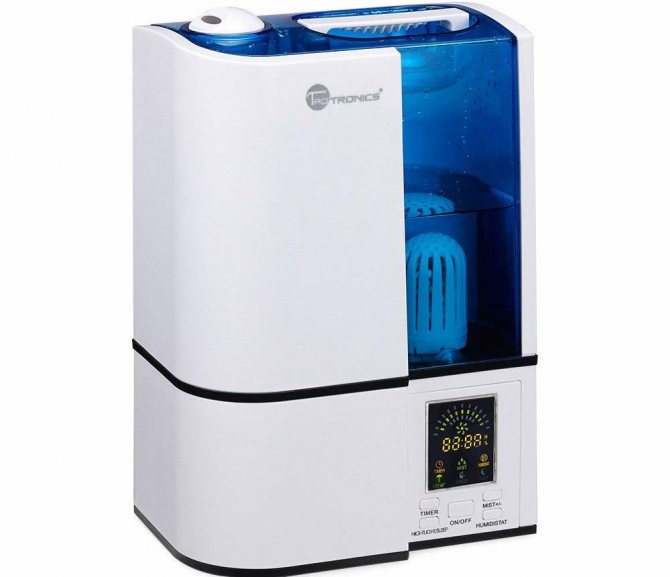
One of the most technologically advanced types of humidifier, the working process of which is to generate fog due to the finely dispersed breakdown of water droplets by ultrasonic vibrations. However, the features of such spraying have their disadvantages associated with rapid wear of the working equipment. How to properly use an ultrasonic humidifier to extend its service life? The maximum that the user can do for this is, if possible, use clean distilled water for refilling. It is desirable that it does not contain microorganisms, heavy salts, suspensions and other mechanical particles that could clog the device emitter.
Recommendations for choosing a household humidifier
Having decided on the appropriate type of device, you can begin a more refined selection based on the main performance characteristics and functions. At a basic level, water consumption and battery life should be correlated with room size and work process requirements. You should start from the fact that daily work in a room with an area of 15-20 m2 requires 5-7 liters of water. Usually the calculation is made for 12 hours, so the optimal tank volume would be 3-4 liters. Next, you can move on to the question of how to choose the best air humidifier for an apartment based on its set of functions. What should you pay attention to? Of course, there may be cases where the sole task of increasing the humidity coefficient in a room is required. If so, then additional functionality can be limited to night lighting and a hygrometer. The latter is a sensor that will allow you to monitor the humidity level. But it hardly makes sense to give up other additional features of the device, which are provided even in budget versions. As an addition, in particular, it offers air purification, aromatization (diffusing essential oils), ionization, auto shutdown, etc.
What kind of water to put in humidifiers
The performance of the device and the process of humidifying indoor air directly depend on the quality of water.
Each specific humidifier requires a specific approach to the liquid.
Before use, be sure to read the instructions from the manufacturer. Some models have their own nuances in operation.
For example, water getting into the ventilation duct will lead to breakdown in most ultrasonic ones (for example, in the popular Boneco Air-O-Swiss AOS U200 model, etc.).
The manufacturer of the Timberk THU UL 03 A1 model recommends filling the tank with clean water every day, not adding essential oils, detergent, or warm water above 40 ° C.
A different fluid composition will affect internal parts and cause malfunction.
Basic instructions
- Before filling the reservoir with water, turn off the power supply to the humidifier and remove the power plug from the outlet.
- Use only clean, cold tap water. If you have hard water at home with a high content of mineral salts, use filtered, distilled water.
- Do not turn on the humidifier if there is no water in the tank
- Pour cold water into the tank no more than 40 °C (these requirements are set by most manufacturers of ultrasonic humidifiers; steam humidifiers have a limit of no more than 60 °C. The exact temperature can be found in the device passport.
- Add flavorings strictly according to instructions.
There are models with aromatization, there is a bath (capsule) for aromatic oils. The manufacturer's instructions prohibit adding essential oil without this function. Ultrasonic devices are especially sensitive to this.
Water quality
The most unpretentious in this sense is a steam humidifier. You can fill it with tap water and it will work smoothly. The fact is that the water in such a humidifier is first boiled, and only then is fed into the filter.
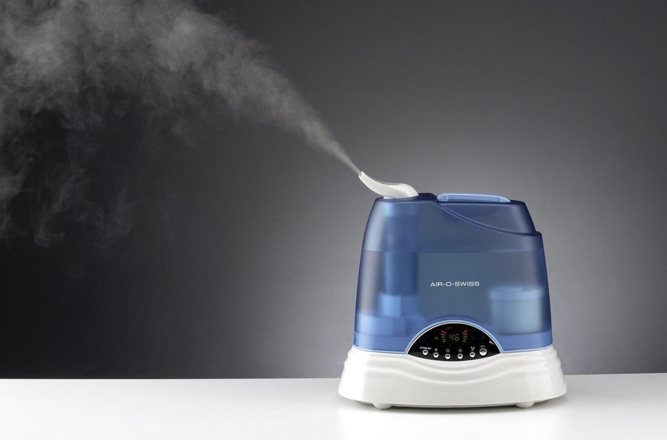
But if the water is too hard or contaminated, you should first pass it through a filter, and only then pour it into the humidifier, so as not to inhale the salts of hard water, as this is extremely dangerous to health.
Traditional humidifiers are more demanding on the condition of the water being poured in, since it evaporates in the form in which it enters. In addition, the device contains cartridges, which, when salts and bacteria come into contact with them, quickly become contaminated. If you pour unpurified water into such a humidifier, you will have to change the cartridges almost every day, and this is quite expensive. It is better to use distilled water, which is purified from salts and impurities.
Ultrasonic devices are considered the most capricious in terms of water poured. Under the influence of ultrasound, not only water, but also the substances in its composition are broken into tiny drops.
Drops of these substances easily (since they are very small) penetrate the respiratory tract, where they settle, then causing difficulty breathing, coughing, and allergic reactions. Obviously, it is better to fill an ultrasonic humidifier with well-purified water. This is regular “store bought” bottled water. However, not everyone can afford it, so we are telling you a way to purify water at home yourself.
To do this, you need to pour water into the pan, place a glass bowl in it and cover the top with an inverted lid with a handle. The pan must be heated, but not allowed to boil.
You will see how the condensate formed will flow from the handle of the inverted lid into the bowl - this is purified water. To make condensation form faster, you can put ice on the lid.
Of course, this procedure will take a lot of time, and the amount of condensate will be small, but it will definitely be enough for a one-time pour into the device. If you have time, you can make condensate for future use and store it until the next time you use the humidifier. Just remember to empty the device of any unused water and rinse it thoroughly after each use.
Humidifier Operating Instructions
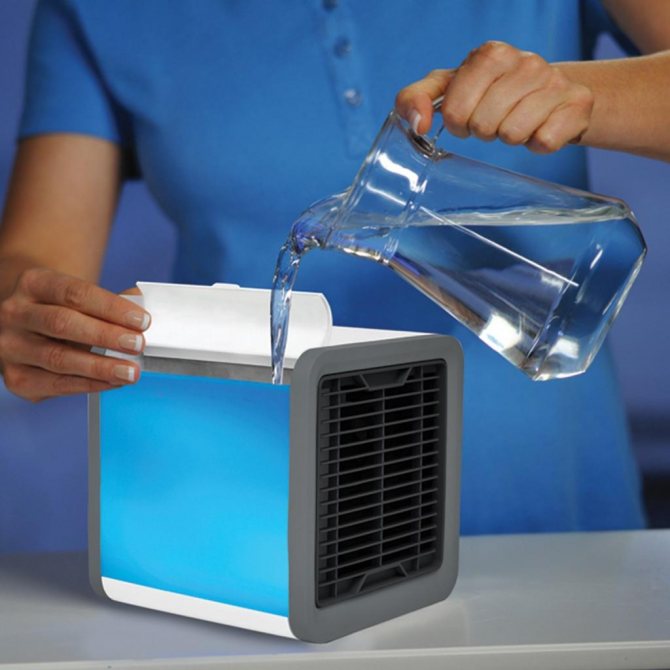
When using the device, the owner will have to deal with a tank for refilling water, a power supply (mains) and a control panel with buttons (hardware or sensors). To begin with, you need to place the humidifier on a flat surface, fill it with water to the desired level and, if necessary, add a couple of drops of essential oil to the measuring container for an aromatizing effect. After this, the device will be ready for use. How to properly use the humidifier further? After pouring water and connecting, you should wait a couple of minutes, after which in most models the corresponding readiness indicator will activate. Next, all that remains is to set the timer operation time and the humidification mode (intensity). If possible, the backlight operating parameters can also be adjusted.
Aromatization and ionization
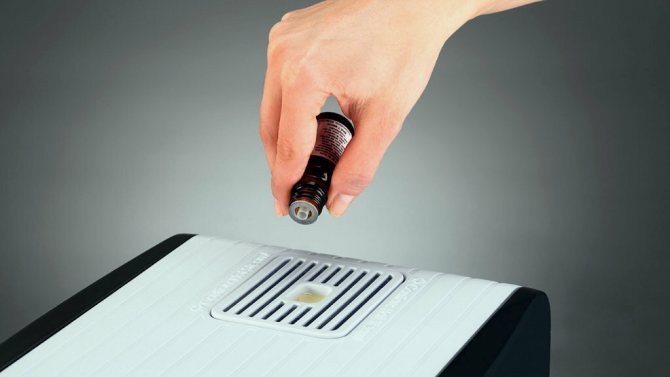
Humidifiers usually have a separate reservoir for essential oils (source: AliExpress)
Aromatization. Not all air humidifiers allow the use of essential oils, which evaporate and create a pleasant aroma in the room. Many directly state in the instructions that such products should never be used. But there are also models with resolution.
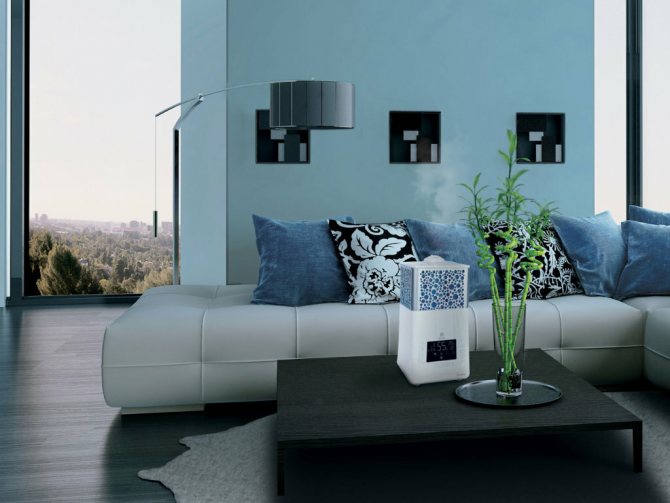
Electrolux EHU-3710D with support for air ionization process
Ionization. Some models of air humidifiers are also able to supply high voltage to special electrodes, which are responsible for increasing the number of charged particles in the air. This process is accompanied by a fresh smell in the room and is actively used by marketers. Consultants in stores even say that humidifiers with ionization simplify the breathing process. No one has done any meaningful research on this matter, but one thing is for sure - an increase in the number of charged particles in the air leads to an increase in dust on furniture and other surfaces, and for many this will be much more important.
Device maintenance instructions
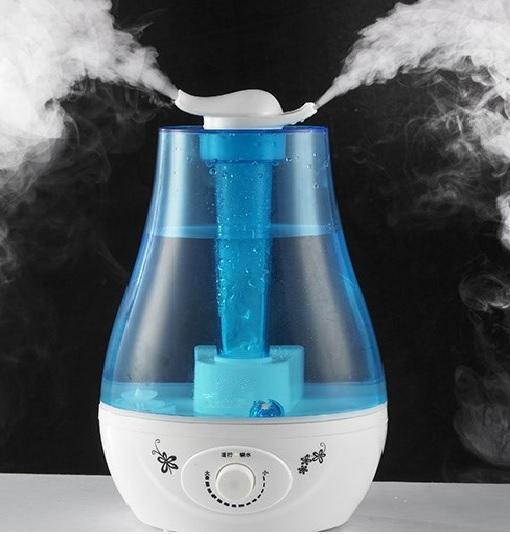
The user's main task when caring for a humidifier will be to clean and wash it. This is especially true when using hard water, which leaves a characteristic white coating on the surfaces of the transducer and emitter. How to use a humidifier correctly to minimize the harmful effects of low-quality and contaminated liquid? You can pre-filter and boil water for refilling, but this does not guarantee the elimination of deposits on the internal surfaces of the device. Cleaning is done with damp cloth wipes or microfiber. Only distilled water is used for care. Abrasive and cleaning products should not be used at all. They are replaced with a few drops of vinegar. After treating the contaminated surfaces of the humidifier, the device is rinsed and dried.
How to use a humidifier in a nursery?
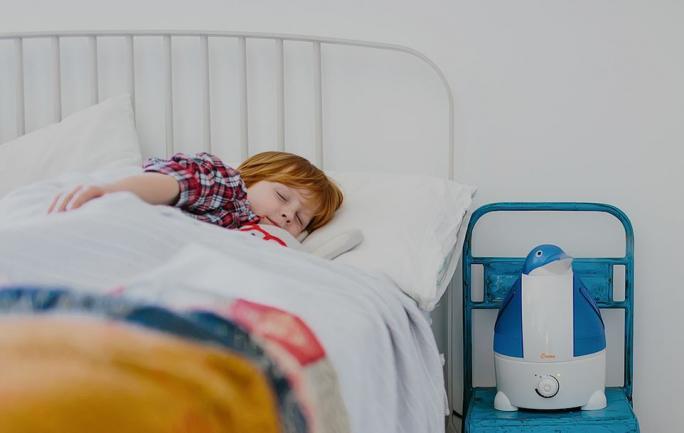
Today there are special models of humidifiers for children's rooms, but it is important to understand that this positioning is conditional. We can talk about design qualities, the shape of the structure that the child will like, etc. However, the performance characteristics are selected based on the capabilities of conventional humidifiers. At most, the device may have a special mode for a children's room. But you can configure it yourself.
What is a child mode in a humidifier? How is it different from the usual one? As experts note, first of all, this is a mandatory combination of two functions - humidification and air washing. The limited range of the humidity coefficient is fundamentally important, since too dry air is harmful to the respiratory system, and dampness is a favorable environment for the development of mold and microbes. So, for a room of 10 m2, a humidifier set to children’s mode should be ready to increase the humidity level to 30-40% in an hour at a temperature of 20-25°C.
Purpose of humidifiers
Room humidifier
This type of device is used in cases where there is an insufficient level of air humidity within the room. This, in turn, is often one of the common causes of a large number of different diseases. This is explained by the fact that low air humidity in an apartment or office in most cases increases the human body’s sensitivity to various types of infections, as well as various respiratory diseases.
Such problems quite often lead to peeling of the skin of the hands and face of the person who is constantly in it. This problem is especially relevant in winter, since it is on such days that the humidity within a room or office is much lower than the normal level. All of the above problems can be solved by using a humidifier.
It is also worth noting that lack of humidity harms not only people. Plants also perceive this negatively, including, of course, indoor flowers; they always need favorable conditions. There are some plants that are particularly fond of moisture, which will require daily spraying; they will also need to be located near vessels with water or covered with moistened gauze. Agree, this is a very troublesome task, and its effectiveness can be questioned. Devices that humidify the air are also suitable for these purposes.
Air humidification
The operating principle of an air humidifier is based on processes during which natural evaporation processes are carried out. This is how most devices of this type operate. The technology involves supplying evaporated moisture into the space of the room. There are also types of such devices that provide for the forced evaporation of moisture.
General tips for using the device
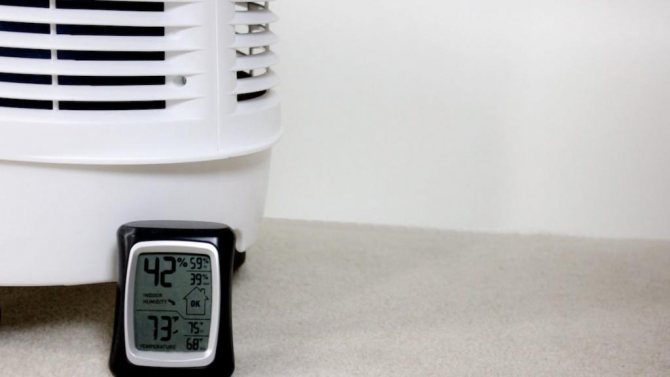
Despite its simple design, a humidifier is an electrical device whose operation is subject to increased safety requirements. This is due precisely to the fact that its operating principle involves spraying liquid. How to use a humidifier correctly to eliminate the risk of injury and fire? To do this, you must follow the following rules:
- The appliance must be connected to an AC power outlet only. As a rule, with a voltage of 220 V.
- Before use, the integrity of the device is checked - its structure, wiring, cover and controls.
- While the humidifier is operating, do not touch the places where droplets are sprayed and where the air stream is released.
- The device should only operate if it is filled with a suitable liquid according to the requirements in accordance with the level of the measuring tank.

